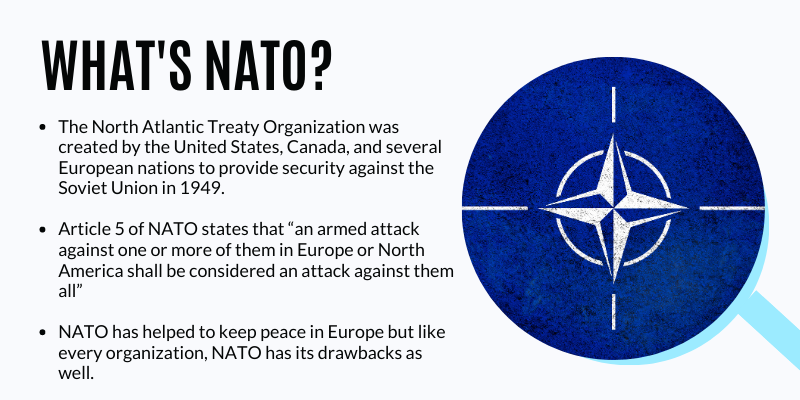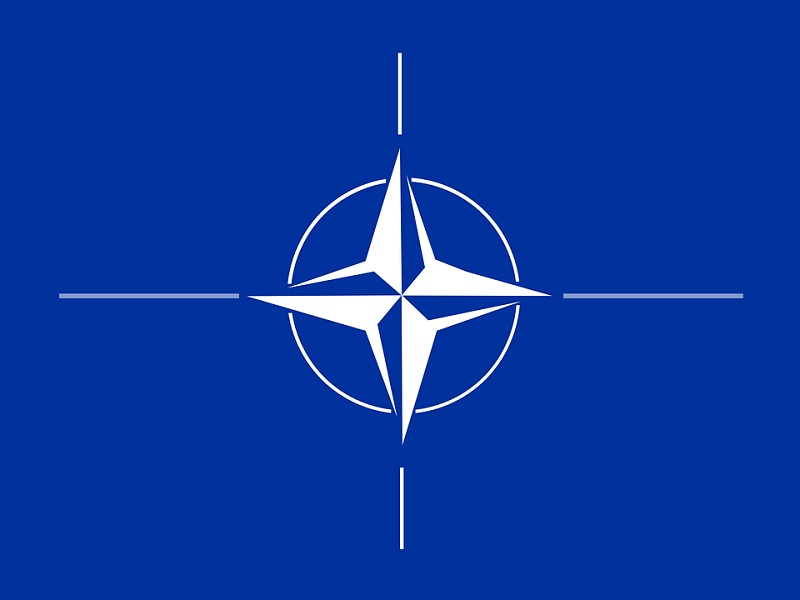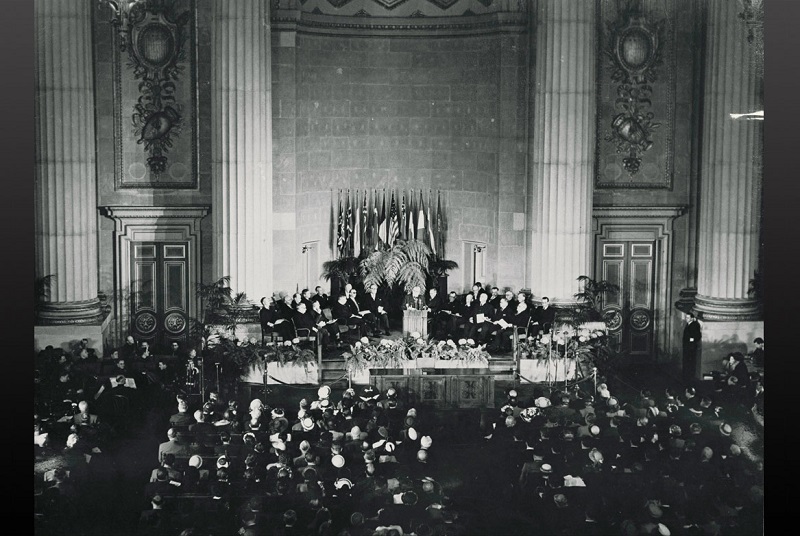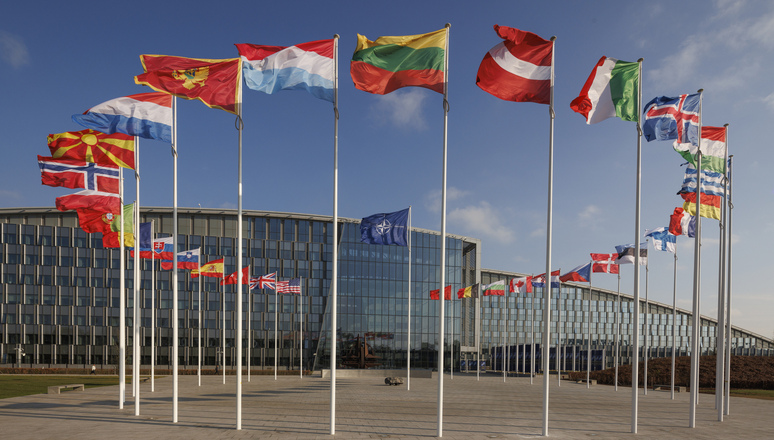What Is NATO?
Article By Serene Joshua, contributing writer
North Atlantic Treaty Organization (full form of NATO) is an international organization that has 31 member nations including the United States, Canada, and other European countries…
Article By Serene Joshua, contributing writer
The ongoing war between Russia and Ukraine is probably the largest conflict to occur in Europe since World War 2.
The reason we need to know about NATO is because this organization has a lot to do with this war, and it’s important to understand what NATO is and its role.
Today we’ll look at:
What’s NATO
What’s the Full form of NATO
Why Was NATO Formed
Where are the NATO headquarters
How many countries are in NATO
History of NATO etc.
Recently, you may have heard also have heard of Finland’s membership to NATO.
What is NATO?
Here’s a quick look at what is NATO and why was NATO formed.

Well, in a nutshell, NATO, or the North Atlantic Treaty Organization (full form of NATO) is an international organization that has 31 member nations including the United States, Canada, and other European countries.
The main goal of this organization, when it was founded, was to provide collective security against what used to be the Soviet Union for North American and European countries in 1949, after the Second World War.
Currently, NATO’s headquarters are in Brussels, Belgium.
What’s the Aim of NATO
Here’s what NATO describes its aims as – they are divided into two parts – Political and Military
“POLITICAL – NATO promotes democratic values and enables members to consult and cooperate on defence and security-related issues to solve problems, build trust and, in the long run, prevent conflict.”
“MILITARY – NATO is committed to the peaceful resolution of disputes. If diplomatic efforts fail, it has the military power to undertake crisis-management operations. These are carried out under the collective defence clause of NATO’s founding treaty – Article 5 of the Washington Treaty or under a United Nations mandate, alone or in cooperation with other countries and international organisations.”
A look at NATO in detail
Okay, let’s look at a little bit more detail about what exactly NATO is.
NATO was formed in 1949, and at the time it only had 12 nations that were a part of it.
As mentioned before, when it was formed, the goal was to protect all the member nations of NATO against threats from the Soviet Union.
Some of its key member nations at the time were the United States, Canada, France, the United Kingdom, etc.,
NATO’s official mission is that they provide both freedom and security to its members politically and through the military.
NATO’s main plan of action is diplomacy. This is when state representatives get together to talk about solutions during conflict instead of simply going to war with each other!
Experts of military and non-military action discuss events of conflict and tension and then decide what to do from a military and diplomatic perspective. Any decisions that NATO takes have to be approved by all of its member nations
Over time many more countries joined and currently, it has 31 member nations with Finland being the latest one.
What does NATO do?

Now that we know what exactly NATO is, let’s take a look at what they do.
Here is a key point to keep in mind – Article 5
Article 5 is the most important law or rule in NATO’s charter. So what exactly is Article 5?
Article 5 of NATO states that “an armed attack against one or more of them in Europe or North America shall be considered an attack against them all”
This means that if a country that is not a member of NATO decides to attack a member country within NATO, all other 30 countries will come to its aid. So, it’s like going to war with 30 countries!
This is a major reason as to why countries, including Finland, want to join NATO as no country will have the resources or will to go to war with its members.
But, here’s something to keep in mind – military action is not NATO’s first response. As mentioned before, this is only done after diplomacy fails.
History of NATO

Twelve countries sign the North Atlantic Treaty on 4 April 1949 in Washington, D. C.
Image Source: nato.int
As mentioned before, The North Atlantic Treaty Organization was created by the United States, Canada, and several European nations to provide security against the Soviet Union in 1949.
After World War 2, countries in Europe were going through a difficult time, as their resources were depleted – in terms of their military, economy, and other resources.
In 1948 the United States came up with the Marshall Plan, which gave large amounts of economic aid to European countries affected by the war so that they would cooperate with each other in order to recover from the war.
During this time the UK, Canada, and the US had discussions about security alliances and measures that can act as an alternative to the United Nations which was losing its power in the face of the Cold War.
These discussions then included France, Belgium, Norway, and other European countries and eventually resulted in the NATO alliance.
Who are the members of NATO?

So, the membership of NATO is not for any country.
To be a member of NATO, a country must:
Be located in Europe or North America
Must also have a democratic form of government.
This is not only a decision by the government of a country, the people of the country must agree to membership as well!
So let’s take a look at all the member countries of NATO and when exactly they joined.
| COUNTRY | YEAR OF JOINING |
| BELGIUM | 24 August 1949 |
| CANADA | 24 August 1949 |
| DENMARK | 24 August 1949 |
| FRANCE | 24 August 1949 |
| ICELAND | 24 August 1949 |
| ITALY | 24 August 1949 |
| LUXEMBOURG | 24 August 1949 |
| NETHERLANDS | 24 August 1949 |
| NORWAY | 24 August 1949 |
| PORTUGAL | 24 August 1949 |
| UNITED KINGDOM | 24 August 1949 |
| UNITED STATES | 24 August 1949 |
| GREECE | 18 February 1952 |
| TURKEY | 18 February 1952 |
| GERMANY | 6 May 1955 |
| SPAIN | 30 May 1982 |
| CZECH REPUBLIC | 12 March 1999 |
| HUNGARY | 12 March 1999 |
| POLAND | 12 March 1999 |
| BULGARIA | 29 March 2004 |
| ESTONIA | 29 March 2004 |
| LATVIA | 29 March 2004 |
| LITHUANIA | 29 March 2004 |
| ROMANIA | 29 March 2004 |
| SLOVAKIA | 29 March 2004 |
| SLOVENIA | 29 March 2004 |
| ALBANIA | 1 April 2009 |
| CROATIA | 1 April 2009 |
| MONTENEGRO | 5 June 2017 |
| NORTH MACEDONIA | 27 March 2020 |
| FINLAND | 4 April 2023 |
Who leads NATO?
NATO is led by a Secretary General who is responsible for the implementation of decisions and acting as a spokesperson between member countries.
The Secretary General is usually appointed for a term of four years but this can be extended if member countries wish to.
So far, there have been 13 secretary generals of NATO, from different countries.
Let’s take a look at the heads!
| SECRETARY GENERAL | YEARS IN SERVICE | COUNTRY OF ORIGIN |
| Hastings Ismay | 24 March 1952-16 May 1957 | United Kingdom |
| Paul-Henri Spaak | 16 May 1957-21 April 1961 | Belgium |
| Dirk Stikker | 21 April 1961-1 August 1964 | Netherlands |
| Manlio Brosio | 1 August 1964-1 October 1971 | Italy |
| Joseph Luns | 1 October 1971-25 June 1984 | Netherlands |
| Peter Carrington | 25 June 1984-1 July 1988 | United Kingdom |
| Manfred Wörner | 1 July 1988-13 August 1994 | Germany |
| Willy Claes | 17 October 1994-20 October 1995 | Belgium |
| Javier Solana | 5 December 1995-14 October 1999 | Spain |
| George Robertson | 14 October 1999-17 December 2003 | United Kingdom |
| Jaap de Hoop Scheffer | 1 January 2004-1 August 2009 | Netherlands |
| Anders Fogh Rasmussen | 1 August 2009-1 October 2014 | Denmark |
| Jens Stoltenberg | 1 October 2014- Current | Norway |
What are NATO’a biggest achievements?
Now that we know what exactly NATO is, let’s look at some of their biggest interventions and projects.
During the Cold War, NATO’s main aims were to decrease the threat and power of the Soviet Union and ensure that European nations had better unity amongst themselves to stop this. Due to their efforts the Cold War did not have any major violent conflicts between countries and at the end of the Cold War, NATO continued to establish peace.
Remember Article 5 and how threatening it sounded?
Well, not to worry because since its establishment NATO has only acted upon Article 5 once in the event of 9/11. This means that NATO has been able to keep peace among nations for a long time.
Although only European and North American countries can be members of NATO, they have various partnerships with other countries. This helps NATO help with aid and operations across the globe.
For example, Finland has recently become a member of NATO but before they did so they had a partnership with them where Finland provided resources for keeping peace in both Kosovo and Afghanistan through a Partnership for Peace program.
Another example is when NATO helped with relief operations in Kashmir after the 2005 earthquake.
Currently, NATO’s biggest stance has been against Russia in its war with Ukraine. The United States, a member of NATO, has provided 54 billion dollars to Ukraine and other member nations have supported over 6 million refugees of the war.
What are NATO’s drawbacks?
Like every organization, NATO has its drawbacks as well.
One Major problem with Article 5 of NATO is that member nations will be pulled into every conflict that a member country faces with a non-member country.
This means that an attack by Russia on say, Finland for example, should be treated as if it was an attack on every country in NATO and these countries will need to respond with the intensity that Finland would in response to an attack by Russia.
One requirement of being a NATO member is that they have to spend 2% of their gross domestic product (GDP) on their military but many members have failed to meet this target.
The US on the other hand gives quite a bit of financial and military assistance to NATO and critics are worried that this created too much of a reliance on the US. NATO’s mission is that all the member countries work together to achieve its goals but this will create an imbalance of power within NATO.
What is happening with NATO recently?
The latest event is Finland joining NATO and becoming a member.
Finland became a member of NATO on 4th April 2023 almost a year after applying for membership on 18 May 2022.
In a nutshell, Finland shares a 1340 km border with Russia and due to this and the potential threat from Russia, the country applied for membership shortly after Russia’s invasion of Ukraine which took place on 24 February 2022.
In addition to this, Sweden also wants to join NATO.
Magdalena Andersson, Sweden’s Prime Minister, said that if Sweden were the only country in the Baltic Sea region that was not a member of NATO, it would be put in a very vulnerable position. She said that it could not be ruled out that Russia would then increase pressure on Sweden.
With more countries wanting to join NATO this will ensure a strong hindrance and defense for Europe against Russia’s threats.

Better Your Child’s G.K. In 3 Minutes – Get This Free Newsletter
Get fun facts, simple and easy news, quizzes, and lots of other interesting things to read in your mailbox – for free! It’s what we call GK-on-the-go!
I Kid You Not now has a large readership across India and also parts of the world. If you want to write for us, you can submit your story here. You can also apply to become a news anchor. Apply here



Comments